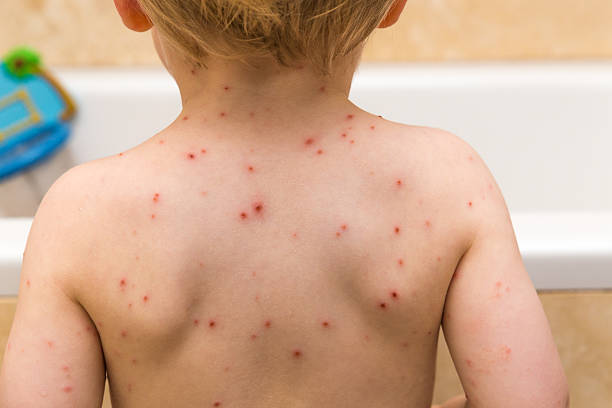The human skin is a complex organ that often reflects our overall health. Any unusual changes in its appearance can be a cause for concern, prompting us to investigate the underlying causes. One such enigma is the presence of pinprick red dots on the skin, a condition known as petechiae. While not typically itchy, these tiny red dots can be alarming and may indicate various underlying health issues. In this article, we will explore the causes, symptoms, and potential treatments for petechiae.
Understanding Petechiae:
Petechiae are small, red or purple spots that appear on the skin due to tiny blood vessels, called capillaries, breaking and leaking blood. The dots are usually pinpoint in size, measuring around 1 to 3 millimeters in diameter. While they can occur anywhere on the body, they are commonly found on the face, neck, and lower legs. Petechiae may not be itchy, distinguishing them from other skin conditions, and they do not blanch when pressed.
Causes of Petechiae:
- Trauma: One common cause of petechiae is physical trauma or injury. Excessive pressure, such as forceful coughing, vomiting, or even vigorous scratching, can rupture blood vessels and lead to the formation of these tiny red dots.
- Medical Conditions: Petechiae can be a symptom of various underlying medical conditions. These include:
- Thrombocytopenia: A condition characterized by a low platelet count, which impairs blood clotting.
- Vasculitis: Inflammation of blood vessels that can lead to their weakening and rupture.
- Infections: Certain viral or bacterial infections, such as meningitis or sepsis, can cause petechiae as a secondary symptom.
- Medications: Some medications, particularly anticoagulants and antiplatelet drugs, can increase the risk of bleeding and contribute to the development of petechiae.
- Nutritional Deficiencies: Inadequate levels of vitamin K, vitamin C, or vitamin B12 can affect blood clotting and vessel integrity, potentially leading to the appearance of petechiae.
- Autoimmune Disorders: Conditions like systemic lupus erythematosus (SLE) and rheumatoid arthritis can cause inflammation and damage to blood vessels, resulting in petechiae.
Symptoms of Petechiae:
Apart from the characteristic appearance of pinpoint red dots on the skin, petechiae may be accompanied by other symptoms depending on the underlying cause. Individuals with petechiae may experience fatigue, weakness, easy bruising, or prolonged bleeding from minor injuries.
When to Seek Medical Attention:
While isolated incidents of petechiae may not necessarily be a cause for immediate concern, recurrent or widespread occurrences warrant medical attention. If petechiae appear suddenly without an obvious cause or are accompanied by other concerning symptoms, it is crucial to consult with a healthcare professional for a thorough evaluation.
Diagnosis and Treatment:
- Medical History and Physical Examination: Healthcare providers will start by gathering a detailed medical history and conducting a physical examination. They may inquire about recent illnesses, medications, or any history of bleeding disorders.
- Blood Tests: A complete blood count (CBC) is a common blood test used to assess platelet count and overall blood health. Abnormal results may indicate an underlying issue contributing to petechiae.
- Additional Tests: Depending on the initial findings, further diagnostic tests such as coagulation studies, blood cultures, or imaging studies may be conducted to identify the specific cause of petechiae.
- Treatment: Treatment for petechiae focuses on addressing the underlying cause. If trauma or injury is the culprit, the dots may fade on their own as the body heals. In cases where an underlying medical condition is identified, appropriate medical intervention, such as medication or lifestyle changes, will be prescribed.
Preventing Petechiae:
While some causes of petechiae are unavoidable, there are steps individuals can take to minimize the risk of developing these red dots:
- Protect the skin: Avoid excessive scratching or trauma to the skin, especially in areas prone to petechiae.
- Healthy diet: Ensure a well-balanced diet rich in vitamins and nutrients to support overall skin and blood vessel health.
- Regular check-ups: Periodic health check-ups can help identify and address potential health issues before they manifest as skin abnormalities.
Conclusion:
Pinprick red dots on the skin, though not typically itchy, can be a sign of underlying health concerns. Petechiae may arise from various causes, including trauma, medical conditions, medications, nutritional deficiencies, or autoimmune disorders. Seeking prompt medical attention for recurrent or widespread petechiae is crucial for proper diagnosis and treatment. By understanding the potential causes and symptoms of petechiae, individuals can take proactive steps to protect their skin and overall health. If in doubt, consulting with a healthcare professional is always the best course of action to ensure a comprehensive assessment and appropriate management.

